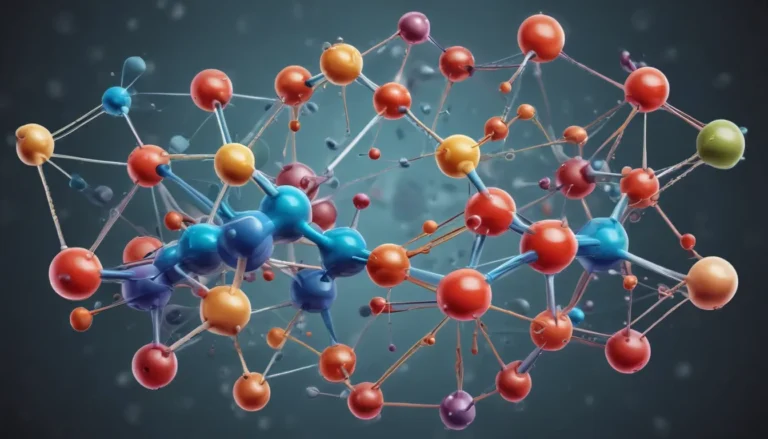A Note About Images: The images used in our articles are for illustration purposes only and may not exactly match the content. They are meant to engage readers, but the text should be relied upon for accurate information.
Chemistry enthusiasts, rejoice! Today, we embark on an exciting journey to uncover the mysteries of Le Chatelier’s Principle. This fundamental concept in the realm of chemistry holds the key to predicting how chemical systems respond to changes in their conditions. Named after the renowned French chemist Henri Louis Le Chatelier, this principle has revolutionized the way we understand and manipulate chemical reactions.
Join me as we explore 15 intriguing facts about Le Chatelier’s Principle, unraveling its origins, significance in various branches of chemistry, and practical applications. By the end of this enlightening journey, you will emerge with a profound understanding of this principle and its profound impact on the field of chemistry.
Unveiling the Origins of Le Chatelier’s Principle
Let’s begin our exploration by delving into the roots of Le Chatelier’s Principle. Named after the visionary French chemist Henri Louis Le Chatelier, this principle emerged in 1884 as a groundbreaking concept for predicting equilibrium shifts in response to external influences.
The Heart of Chemical Equilibrium
At the core of Le Chatelier’s Principle lies a simple yet powerful concept: when a system at equilibrium experiences a disturbance due to changes in temperature, concentration, pressure, or the addition/removal of reactants or products, it responds by shifting in a manner that counteracts the change. In essence, the system strives to minimize the impact of the disturbance and restore equilibrium.
Unraveling the Influence of Temperature on Equilibrium
Temperature plays a pivotal role in dictating the direction of equilibrium shifts, as per Le Chatelier’s Principle. An increase in temperature prompts the equilibrium position to shift towards the endothermic reaction to absorb the excess heat, while a decrease in temperature encourages the shift towards the exothermic reaction to generate more heat.
Navigating the Impact of Pressure on Equilibrium
Similarly, changes in pressure trigger equilibrium shifts guided by Le Chatelier’s Principle. When pressure increases, the equilibrium adjusts by shifting towards reactions that produce fewer moles of gas molecules, thereby alleviating the pressure. Conversely, a decrease in pressure leads to shifts favoring reactions that generate more gas molecules.
Harnessing the Power of Concentration Changes
In the realm of Le Chatelier’s Principle, alterations in concentration wield a profound influence on equilibrium. When the concentration of a reactant or product is heightened, the system responds by shifting towards reactions that consume or produce more of that substance. Conversely, a decrease in concentration prompts equilibrium shifts in the opposite direction.
Catalysts: Accelerators of Equilibrium
While catalysts do not directly alter the equilibrium position, they play a vital role in expediting the attainment of equilibrium by reducing the activation energy. This catalytic effect enables the system to reach equilibrium more swiftly, enhancing reaction rates.
Le Chatelier’s Principle Unraveled in Acid-Base Equilibria
The application of Le Chatelier’s Principle extends to acid-base equilibria, shedding light on how changes in temperature, pressure, or concentration impact the ionization of acids and bases. This profound understanding equips chemists with the ability to manipulate equilibrium conditions to favor the formation of desired products.
Decoding Color Changes in Chemical Reactions
The enigmatic phenomenon of color changes in chemical reactions finds its explanation through Le Chatelier’s Principle. Disruptions to equilibrium, such as the addition of reactants or products, can induce shifts that alter the concentration of colored species, resulting in visually striking color transformations.
Implementing Le Chatelier’s Principle in Industrial Settings
The significance of Le Chatelier’s Principle reverberates through numerous industrial processes, offering engineers and scientists a strategic toolkit for optimizing reaction conditions. By meticulously controlling variables like temperature, pressure, and concentration, industrial experts can enhance product yields and efficiency.
Revolutionizing the Haber Process with Le Chatelier’s Principle
In the realm of ammonia production through the Haber process, Le Chatelier’s Principle takes center stage. By fine-tuning temperature and pressure parameters, chemists can attain high yields of ammonia while minimizing unwanted side reactions, showcasing the practical utility of this principle in industrial applications.
Elevating Efficiency in Leaching through Le Chatelier’s Principle
The process of leaching, which involves extracting valuable metals from ores using solvents, benefits greatly from the application of Le Chatelier’s Principle. By manipulating factors such as temperature, acidity, and concentration, operators can optimize leaching efficiency and enhance metal dissolution rates.
Illuminating Dynamic Chemical Systems with Le Chatelier’s Principle
Le Chatelier’s Principle serves as a beacon of insight into the behavior of dynamic chemical systems, enabling chemists to anticipate and comprehend equilibrium shifts in response to varying parameters. This profound understanding empowers scientists to maintain system stability and optimize reactions.
The Crucial Role of Le Chatelier’s Principle in Iron and Steel Production
Within the realm of iron and steel production, Le Chatelier’s Principle guides the optimization of furnace conditions to maximize the conversion of iron ore into molten iron. By manipulating variables such as temperature, pressure, and gas flow rates, equilibrium is steered towards the desired reactions with surgical precision.
Environmental Chemistry: A Playground for Le Chatelier’s Principle
Environmental chemistry processes provide a fertile ground for the application of Le Chatelier’s Principle. By leveraging this principle, scientists can forecast how changes in parameters like temperature and concentration influence equilibrium in environmental systems, shaping outcomes in phenomena such as acid rain formation and pollutant degradation.
Navigating Equilibrium Shifts in Biological Systems
Even within the intricate landscapes of biological systems, Le Chatelier’s Principle finds relevance, elucidating the nuances of equilibrium shifts. From unraveling the impact of temperature fluctuations on enzyme activity to deciphering biochemical reactions, this principle offers valuable insights into the intricate workings of living organisms.
Embracing the Legacy of Le Chatelier’s Principle
As we draw the curtains on our exploration of Le Chatelier’s Principle, let us reflect on its enduring legacy in the realm of chemistry. From its inception in the late 19th century to its pervasive influence across diverse industries today, this principle continues to shape our understanding of chemical reactions and processes.
FAQs: Your Gateway to Clarity
-
What is Le Chatelier’s Principle?
Le Chatelier’s Principle dictates that a chemical system at equilibrium will adjust itself to counteract any stress applied to it and restore equilibrium. -
How does Le Chatelier’s Principle address changes in concentration?
An increase in the concentration of a reactant or product prompts the system to shift in a direction that mitigates the change and reduces excess concentration. -
How does Le Chatelier’s Principle respond to temperature fluctuations?
Temperature changes prompt equilibrium shifts, with an increase driving the system towards endothermic reactions to absorb excess heat, and a decrease favoring exothermic reactions to generate more heat. -
What happens when pressure is altered according to Le Chatelier’s Principle?
An increase in pressure induces equilibrium shifts towards reactions that reduce the number of gas molecules, while a decrease leads to shifts favoring reactions that increase gas molecules. -
Are there limitations to Le Chatelier’s Principle?
While Le Chatelier’s Principle offers valuable insights, it does not account for factors like catalysts or changes in volume. It also provides qualitative rather than quantitative predictions. -
How is Le Chatelier’s Principle leveraged in industry?
Industries spanning pharmaceuticals, petrochemicals, and food production harness the power of Le Chatelier’s Principle to enhance reaction efficiency, control product yield, and design optimized processes.
Empowering Curiosity and Learning
At the heart of our mission lies a steadfast commitment to delivering enriching and insightful content to our readers. Each fact shared on our platform is a testament to the collective wisdom and knowledge of our diverse community of contributors. As you explore and engage with our content, rest assured that every detail has been meticulously reviewed by our team of dedicated editors to uphold the highest standards of accuracy and credibility.
Join us on this fascinating journey of discovery and learning as we unravel the wonders of Le Chatelier’s Principle and its transformative impact on the world of chemistry. Together, let’s embark on a quest for knowledge, empowerment, and inspiration.
This comprehensive guide serves as a gateway to the intricate world of Le Chatelier’s Principle, empowering readers with a deep understanding of this fundamental concept in chemistry. By unraveling the origins, applications, and implications of this principle, we aim to foster a culture of curiosity, learning, and discovery among our readers. Join us on this enlightening journey as we explore the profound depths of Le Chatelier’s Principle and its enduring legacy in the realm of chemistry.






